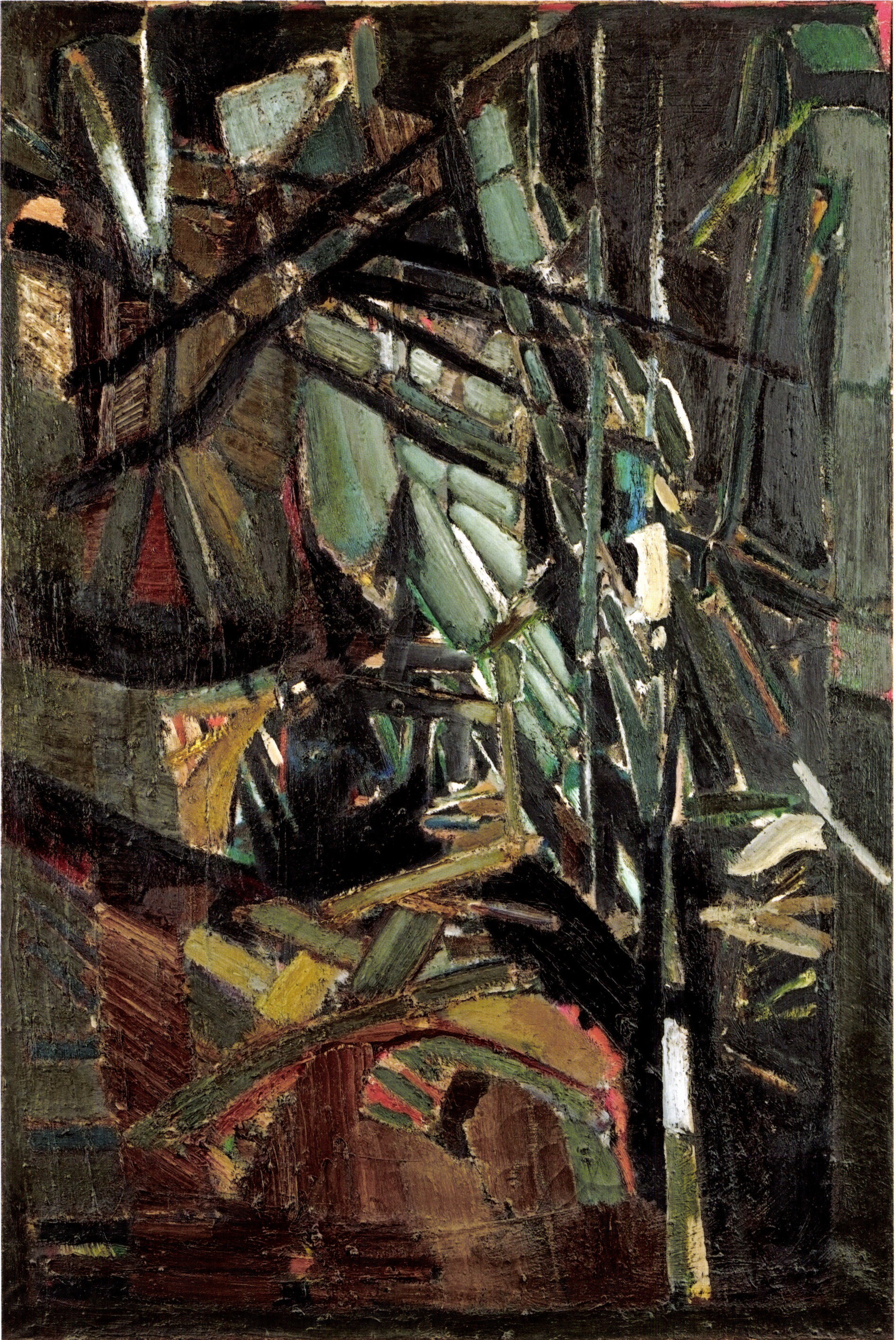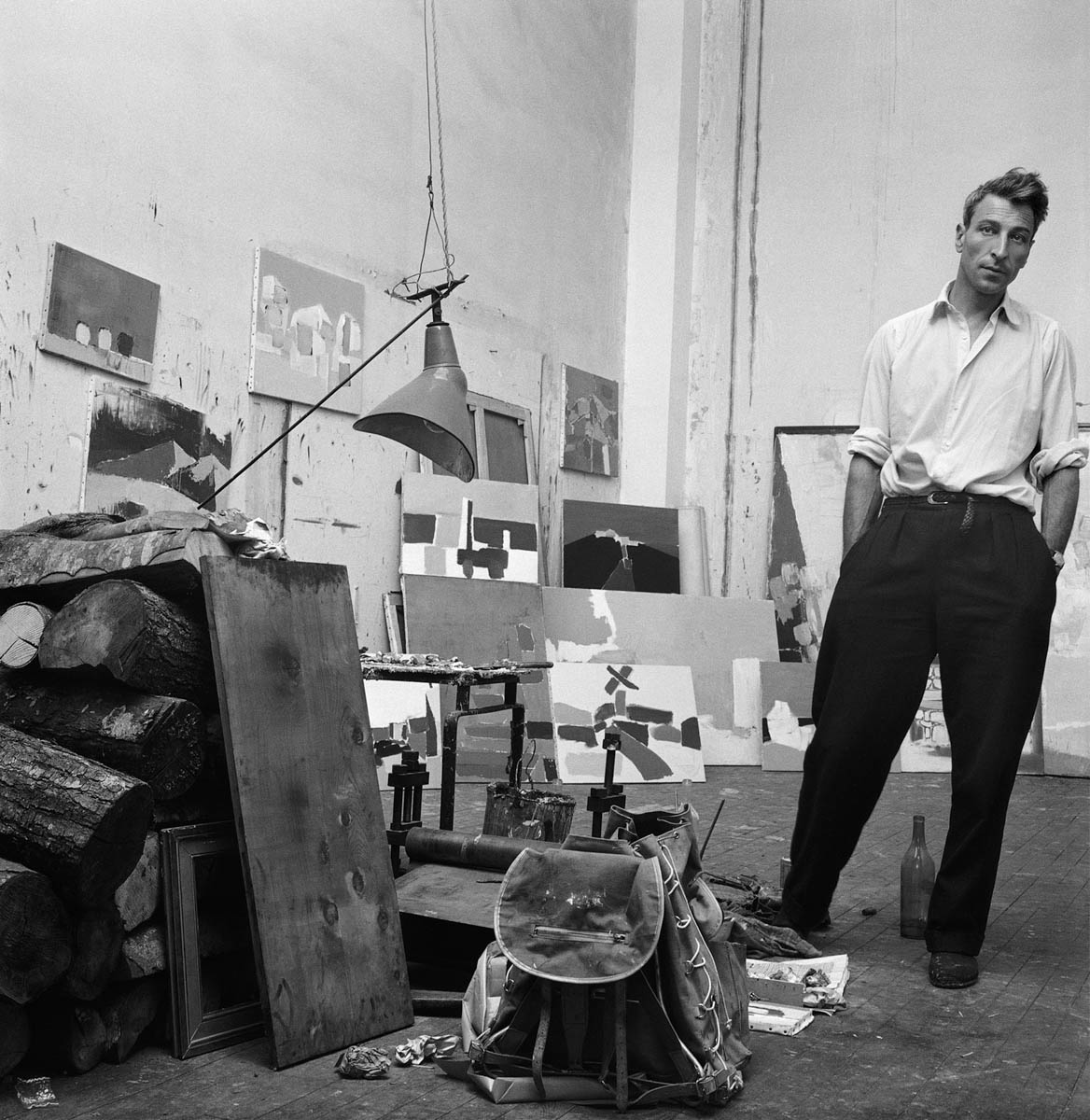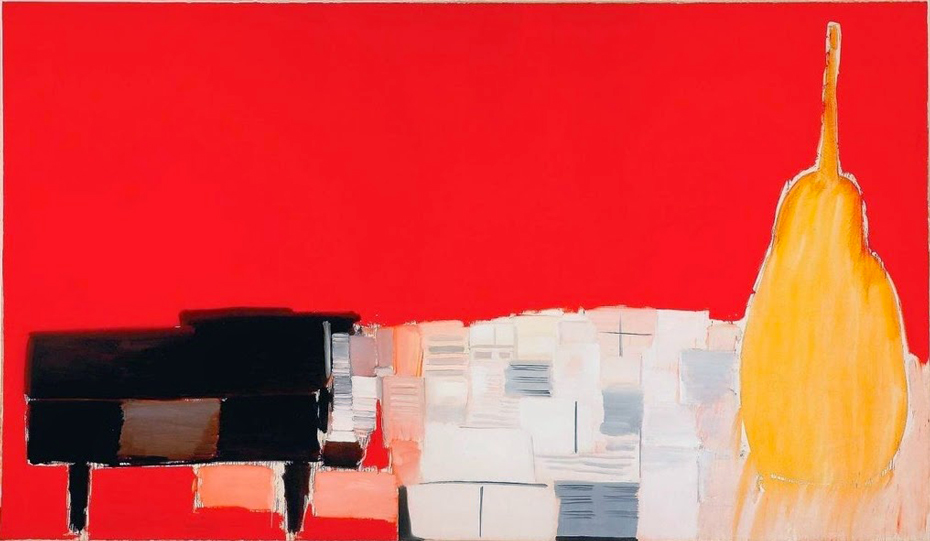Nicolas de Staël: Human… too human
[26 Sep 2023]“What I’m attempting is a continuous renewal, truly continuous, and it’s not easy. I know what my painting really is behind its appearance, its violence, its perpetual trials of strength, it’s a fragile thing in the sense of the good, the sublime. It’s as fragile as love.” Nicolas de Staël, 1954
Every twenty years or so Nicolas DE STAËL (1914-1955)’s work seems to re-emerge at the forefront of the international art scene. The Museum of Modern Art of the City of Paris (MAM) has just opened a new exhibition of the artist’s work that will run until 21 January 2024. The last major retrospective of his work was hosted by the Pompidou Center in 2003. Before that, his work was shown at the Pierre Gianadda Foundation in Martigny in 1995, and before that, at the Grand Palais in 1981. Back in 1955, an exhibition he was still working on at the time of his suicide was toured across the United States. French museums ultimately have very few paintings by the painter on their walls. The latest show in Paris contains around 200 works (paintings, drawings, engravings and notebooks), a majority of which have never been shown in France before. Curators Charlotte Barat-Mabille and Pierre Wat have chosen a chronological presentation that highlights early works often eclipsed by later works and takes us through his multiple fast-living and fiery adventures in various countries which all contributed to the constitution of his repertoire of color and an incessant formal research between abstraction and figurative representation with continually renewed approaches to light, texture and composition. The exhibition presents an œuvre that is both dense and constantly changing: each of the 11 rooms seems present a new period. The heavy catalog also highlights the artist’s restless quest and contains interviews with people who were close to him. Anne de Staël, his eldest daughter, and Pierre LECUIRE, his faithful friend, poignantly describe the visual journey the painter embarked on.

Nicolas de Staël, Composition, 1947
“Brutal painting” (P. Lecuire)
Nicolas de Staël entered the world with the seeds of an extraordinary destiny. Born in Saint Petersburg into an age-old lineage of German nobility, he spent his childhood in the severe environment of the Peter and Paul Fortress of which his father was vice-governor. But the revolution of 1917 forced the whole family into exile, and the child who was originally destined to become a page of the Tsar found himself an orphan at 6 years old, first in Poland then in Belgium. Irresistibly attracted to art, he opposed his adoptive parents and went on trips where his eyes absorbed and his hands created and also, often, subsequently destroyed. Handsome and charismatic at the same time, he did not go unnoticed. Jeannine GUILLOU (1909-1946), also a painter, whom he met in Morocco in 1938, left her husband for him. When France entered the war in 1939, he joined the Foreign Legion. After demobilization he began to establish a network of artist friends and gallery owners, including Jeanne Bucher and Jacques Dubourg.
Jeannine Guillou hired a student, Pierre Lecuire, to teach her son Antek. Lecuire was deeply marked by his years working closely with the artist, and compiled his impressions in a Journal of the Staël years. The journal helps us to understand the impact of Staël’s first abstract paintings which he describes poetically as “so sensual in color, painted with anger, mysticism and frustration, sometimes carnal with intense reds, other times muted with grays, somber greens and browns. There are narrow and tight circles but there are also mystical drawings that radiate like a harbor lit by spotlights, with God falling from the sky, or the night round of dark atoms.” The very rich decade 1938-1947 remains largely eclipsed both in museums and on the auction market. A Composition from 1947, sold in May 2012 at Sotheby’s Paris, is the only one from this period to have crossed the $1 million threshold (way above its high estimate of nearly $500,000). According to Pierre Lecuire, de Staël’s life was all about art, occupying all his space, everywhere, all the time. Constantly pushing his painting to its limits, the artist tortured himself and struggled through a catastrophic financial situation. He lived the archetypal “cursed painter” life until his suicide at the age of 41, just after signing an exclusive contract with Paul Rosenberg, the famous New York art dealer, that would at last have given him notoriety and material comfort.
The studio as refuge
“Make it always stronger, more acute, more refined, always more absolute, with, at the end, the idea of the supreme masterpiece that would consist of a line and a void”.

Nicolas de Staël in his studio, 1954
After the sudden death of Jeannine Guillou in 1946, Nicolas de Staël married Françoise Chapouton, who assumed responsibility for their daily lives with the children. As a result, the artist had complete freedom to devote himself to painting. His daughter Anne describes her father’s places of creation in splendid detail; no easel, the canvases – often very large formats – were placed directly on the floor. She remembers the tall figure sometimes curled up on a small armchair, then suddenly standing up to add material with a palette knife to several canvases at the same time and almost in the same gesture. Like an orchestra conductor who alternately or simultaneously summons the instruments that set his personal symphony to music.
Nicolas de Staël did not paint from nature, nor outdoors. He was constantly moving, following his personal quest, traveling, absorbing and working on the material until it captured his inner landscape. The hypersensitive painter who said he was “embarrassed to paint a similar object”, was nevertheless careful not to take sides in debates that raged about abstract or figurative art: “I do not oppose abstract painting to figurative painting. A painting should be both abstract and figurative: abstract like a wall… figurative like a representation of a space.” (1952). It was therefore space that mattered to him, and above all – like MATISSE, KANDINSKY and MONDRIAAN – color space. De Staël’s notoriety and auction market are highly focused on the last few years of his life. The rediscovered horizons of Sicilian landscapes, the special light of Provence, the effervescence of the Parc des Princes… everything captivated de Staël and everything inspired him. Collectors are particularly fond of his brighter works and his large formats depicting footballers. The artist has nearly 80 auction results above the $1 million threshold to his name, mainly post-1950 works in a market that remains predominantly French, with notable exceptions in the United States
But the MAM’s latest exhibition reminds us that it would be wrong to focus only on the apparently ‘tragic’ aspects of de Staël’s life by refocusing our attention on the artistic research of a man who painted for a living and showed himself incapable of painting to order. In the coming years, the art market could therefore be inclined to rediscover the works of his early years, which are as important to art history as those of his latter years.
Did he believe his own words when he confided to his stepson Antek a few days before his death, “You know, I don’t know if I’m going to live long. I think I’ve painted enough. I achieved what I wanted”? The third love of his life, Jeanne Polge, refused to leave everything for him. On 16 March1955, Nicolas de Staël threw himself from the terrace of his studio, leaving his largest canvas unfinished, The concert (Picasso museum, Antibes). Against a burning red, a black piano and a yellow double–bass… now reduced to silence.

Nicolas de Stael, Concert, 1955




 0
0
